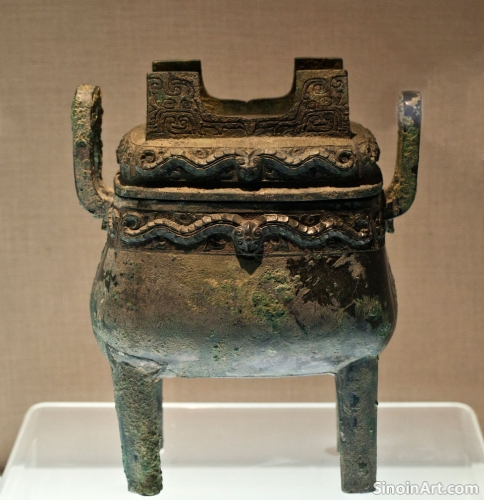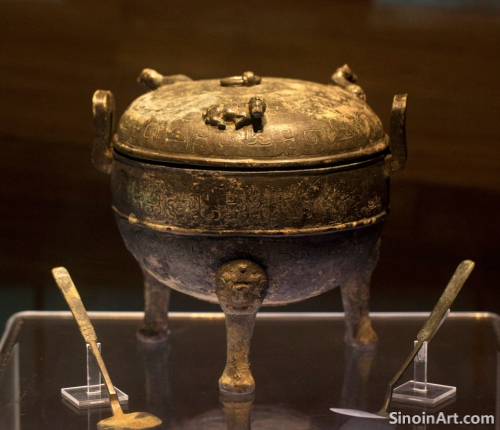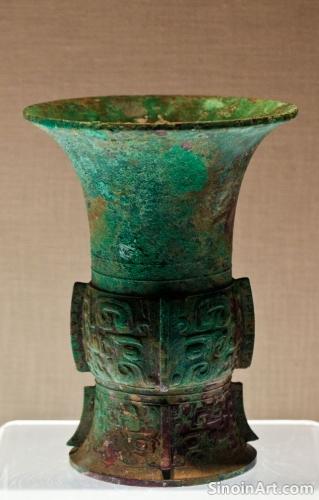The Influence of Bronze Ware on the Development of Chinese Seal Carving
|
The meticulous craftsmanship and precise designs found on Chinese bronze ware had a significant influence on the development of seal carving (篆刻), a related art form that utilized similar techniques and emphasized the importance of strong lines, balanced composition, and symbolic meaning. The close relationship between these art forms helped to shape both of them for many years to come.  The precise and stylized characters found in bronze inscriptions served as an inspiration for seal carvers, as they sought to create similarly legible and aesthetically pleasing designs. The styles of the bronze works provided a model and a template for the work of seal carvers. The interplay between written language and the metal arts helped to elevate the status of both.  The technical skills required to carve bronze, including the control of tools, the creation of sharp lines, and the mastery of negative space, were also transferred to the art of seal carving. The mastery of the metalworking skills helped to translate into the more intricate work of seal carving. The skill required for both helped to elevate both art forms to a higher level.  Seal carvers also adopted some of the symbolic motifs and patterns found on bronze ware, incorporating them into their designs, further demonstrating the influence of bronze on a wide variety of artistic practices. The use of shared symbols and motifs further enhances the visual impact of both art forms. The interplay between bronze work and seal carving helps to reveal the interconnectedness of artistic and technological practices in ancient China, highlighting how innovation and artistic expression often cross the boundaries of distinct art forms. This close relationship helped to shape both styles for many years to come. The transfer of techniques from one art form to another helped to spur innovation across the entire artistic landscape. |
Tag : bronze influence, seal carving, Chinese zhuanke, ancient art, metalworking
Related information
- The Geometric Patterns of Bronze Ware: Order, Harmony, and Cosmic Significance
- The Enduring Allure of Chinese Bronze Ware: A Source of Inspiration and Study
- Bronze Ware and the Development of Ancient Chinese Agriculture: Water Management and Irrigation Systems
- Bronze Ware and Ancient Chinese Medicine: Tools and Beliefs About Health
- The Role of Bronze in Ancient Chinese Agriculture: Tools, Irrigation, and Food Production
This article explores the geometric patterns on Chinese bronze ware, highlighting their role in conveying order, balance, and harmony, and discussing how they reflected an understanding of the universe and the importance of the repeating patterns and cycles found in nature.
This article reflects on the enduring allure of Chinese bronze ware, highlighting its technical skill, artistic beauty, historical significance, and the importance of its study and preservation for future generations.
This article explores the use of bronze in ancient Chinese agriculture, highlighting its role in creating water management systems, irrigation components, and other implements that were essential for increasing agricultural productivity and supporting a growing population.
This article explores the use of bronze in ancient Chinese medicine, highlighting the creation of surgical instruments, diagnostic tools, and vessels used for herbal remedies, and revealing the intersection of metallurgy and medical practices.
This article explores the role of bronze in ancient Chinese agriculture, highlighting its use in creating more effective tools, developing irrigation systems, improving food processing, and its contribution to greater agricultural efficiency and economic development.